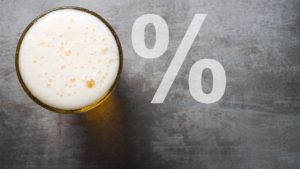 After a great night in with mates, drinking beer and playing music together, a friend of mine took a closer look at his beer can and exclaimed; “Guys! We’ve been drinking alcohol free beer!”. They all laughed, and couldn’t believe they hadn’t noticed! He mentioned that much to his own surprise he had really enjoyed the ‘beer’, but would never have intentionally bought alcohol free beer as he’d never previously tasted one that he liked.
After a great night in with mates, drinking beer and playing music together, a friend of mine took a closer look at his beer can and exclaimed; “Guys! We’ve been drinking alcohol free beer!”. They all laughed, and couldn’t believe they hadn’t noticed! He mentioned that much to his own surprise he had really enjoyed the ‘beer’, but would never have intentionally bought alcohol free beer as he’d never previously tasted one that he liked.
This story highlights a few pertinent issues within the non and low alcoholic drinks market.
that design is important to ensure initial purchase and secondly, taste is critical to secure repeat purchase. However, the balancing act that non and low alcoholic drinks producers need to strike is far more complex than this anecdote portrays.
Change In Culture
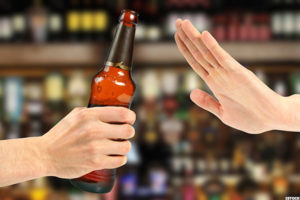 Most millennials are reconsidering the role of alcohol within social occasions, as they seek to be more present and mindful in their social interactions. The main consumer drivers for low alcohol consumption are: health, moderation and the rejection of binge drinking culture. Yet the main barriers to purchasing low or no alcohol options are price and perceived taste compromises.
Most millennials are reconsidering the role of alcohol within social occasions, as they seek to be more present and mindful in their social interactions. The main consumer drivers for low alcohol consumption are: health, moderation and the rejection of binge drinking culture. Yet the main barriers to purchasing low or no alcohol options are price and perceived taste compromises.
Club Soda addressed these negative taste connotations with their Mindful drinking festival, launched to promote “everything in moderation. Except flavour”. With 25 stalls, packed with innovative and inspiring adult soft drinks and alcohol-free variants they are intent on creating “a world where nobody has to feel out of place if they’re not drinking”.
 Catching up with friends and colleagues in pubs and bars, alcoholic drink in hand, is an established and significant part of many people’s social lives; a way to interact, bond and relax. Consequently, there can be a degree of stigma (particularly amongst pre-millennial demographics) associated with not ‘drinking’ when out, and a desire to have a variety of socially acceptable non or low alcohol choices has driven an explosion of NPD in this category. Drinks that look and feel the part enable people to feel comfortable making a non or low alcohol choice.
Catching up with friends and colleagues in pubs and bars, alcoholic drink in hand, is an established and significant part of many people’s social lives; a way to interact, bond and relax. Consequently, there can be a degree of stigma (particularly amongst pre-millennial demographics) associated with not ‘drinking’ when out, and a desire to have a variety of socially acceptable non or low alcohol choices has driven an explosion of NPD in this category. Drinks that look and feel the part enable people to feel comfortable making a non or low alcohol choice.
Believe The Hype
If the activity within the past 2+ years is anything to go by, the market for non/ low alcoholic alternatives means big business.
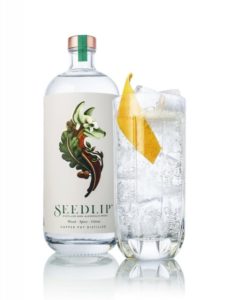 After its launch in 2016, Seedlip became the first premium non-alcoholic distilled spirit on the market, and it continues to go from strength to strength. However, a bottle of this potion will set you back nearly £25, despite duty not being applied to drinks with an ABV above 5.5%.
After its launch in 2016, Seedlip became the first premium non-alcoholic distilled spirit on the market, and it continues to go from strength to strength. However, a bottle of this potion will set you back nearly £25, despite duty not being applied to drinks with an ABV above 5.5%.
With the technical complexities associated with producing flavoursome non or low alcoholic drinks, brands could be justified in charging a similar price to full ABV drinks, but the majority of consumers do not understand such a price premium on drinks that have ‘less’ attributes than usual. A quick survey within BrandMe alone, confirmed the opinion that alcohol free versions of regular drinks should definitely be priced lower, otherwise “you’re ‘paying’ by not having the alcohol, from both a pleasure and financial perspective.”
Meeting Demand
Budweiser, Heineken and Guinness have all launched zero alcohol beers within the past 12 months, not surprising given the overwhelming statistics from the WHO, which details the great fall in volume of beer consumed per person across Western Europe e.g. Italy (-44.5%0, Spain (-24.2%), France (-25.6%).
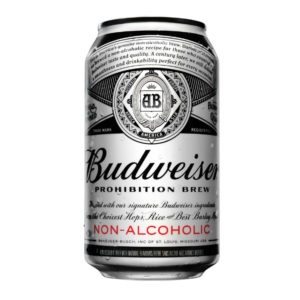 Based on their own research, AB InBev want 20% of their global volume sales to be no or low alcohol beer by 2025. This follows the maturation of the growing segment of 16-24-year-olds who do not drink. This demographic has increased by 40% between 2005-2014 (UK office for national statistics).
Based on their own research, AB InBev want 20% of their global volume sales to be no or low alcohol beer by 2025. This follows the maturation of the growing segment of 16-24-year-olds who do not drink. This demographic has increased by 40% between 2005-2014 (UK office for national statistics).
Craft soft drinks are also becoming a key player vying for this growing segment of teetotallers. Loaded with botanicals, essences and exotic flavours, they are angling for adult taste buds.
Franklin & Sons, Britvic’s Thomas and Evans, Non-Such and Lurvill’s delight all seek to offer a more sophisticated drinks experience, with a lower sugar content than regular soft drinks. As Nick Strangeway, co-founder of Hepple Gin, quoted in the FT in 2016; “What’s new now is that you can get a ready-made non-alcoholic beverage that has the same amount of thought put into is as a spirit.”
Consumers are looking for premium credentials and clout when choosing a non-alcoholic beverage. They do not want to be seen interacting with ‘childish’ unsophisticated brands, and luckily that is no longer the only option. Surely the trend towards crafted drinks experiences within this category will continue to grow. However, what are the possible opportunities, challenges and key considerations, brands need to account for when embarking on their sober journey?
 Recommendations
Recommendations
According to our creative director, Steve Booth, the lack of consumer commitment to non or lower alcoholic beverages, is still very much attributed to the taste credentials;”… maybe the notable success of Becks Vier and many new low strength IPA beers suggest that customers like the idea of lower alcohol options but aren’t ready to go completely alcohol free just yet. Established brands might do well to consider this approach rather than backing the all or nothing strategy.”
Furthermore, the consumers emerging within the next 10 years, the Gen Z’s, are more visually literate than the generations before them, which emphasises the need for brands to visually differentiate themselves and communicate their values clearly. And as non-alcoholic choices become socially acceptable as a functional story – how can brands build a more emotional hook in future years?
With craft and non-alcoholic beverages presenting the biggest opportunities for growth and NPD (Partake brewing), future possibilities are ripe in this category. The need to balance taste, pricing and importantly, brand story and visual identity will be the deciding factors for success.
Cheers to that!
Article by Stephanie Kiens, Brand Development Manager at BrandMe
About Stephanie
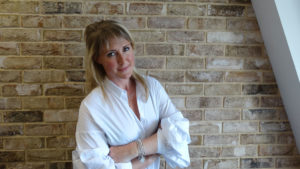 Beyond managing the BrandMe brand, Stephanie also leads the Business Development activity for BrandMe within the UK and Europe, supplying clients and targets with strategic leads to drive profitability and market share.
Beyond managing the BrandMe brand, Stephanie also leads the Business Development activity for BrandMe within the UK and Europe, supplying clients and targets with strategic leads to drive profitability and market share.
Stephanie’s dual Danish and Swedish nationality, Portuguese affiliation and vast client experience, provides strategic support to BrandMe’s thriving international business.
As an experienced International Business Developer with financial acumen, Stephanie’s competencies cover the luxury and FMCG market, encompassing strategy, branding, business development, and marketing.
Source: BrandMe

You must be logged in to post a comment Login